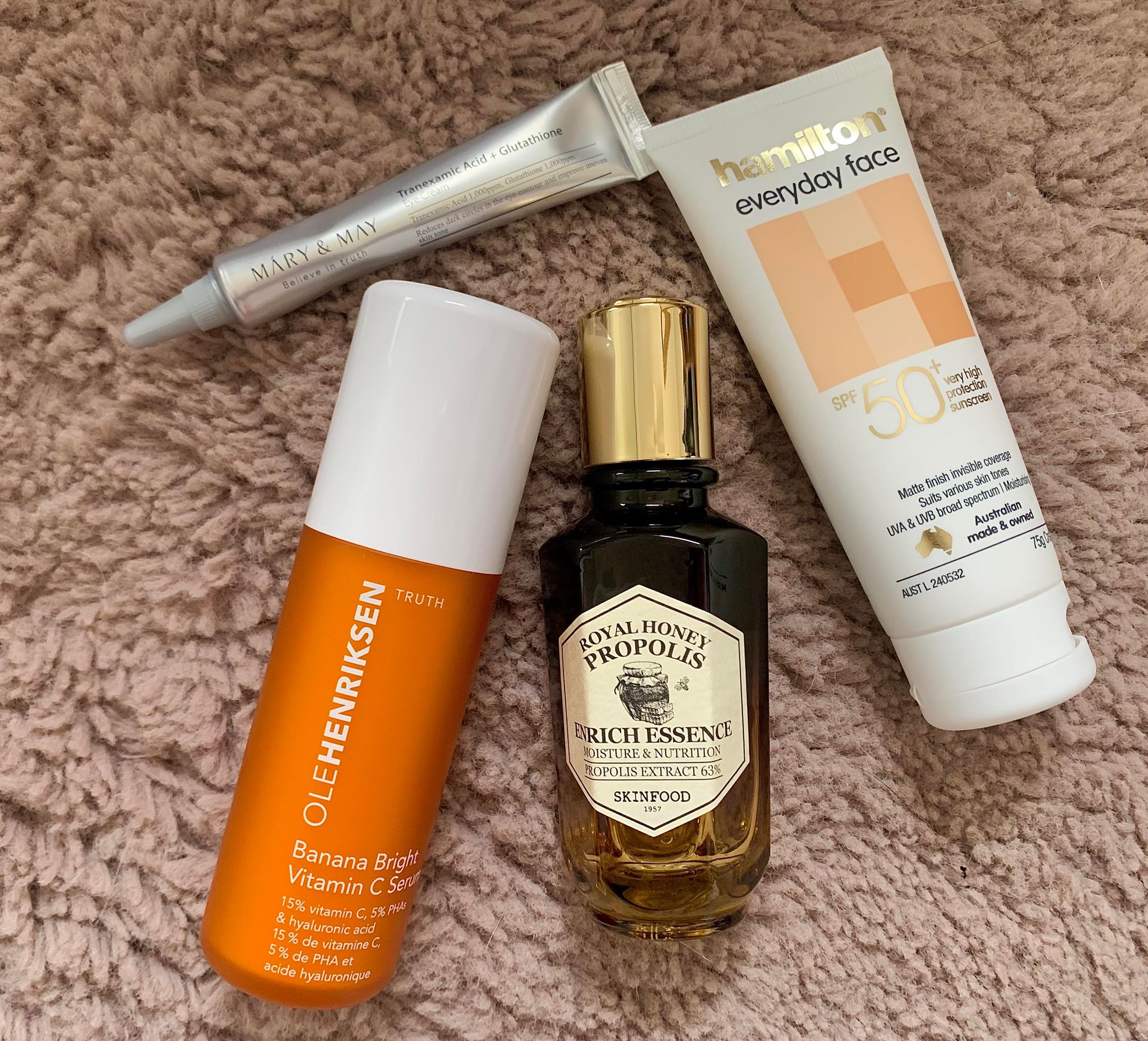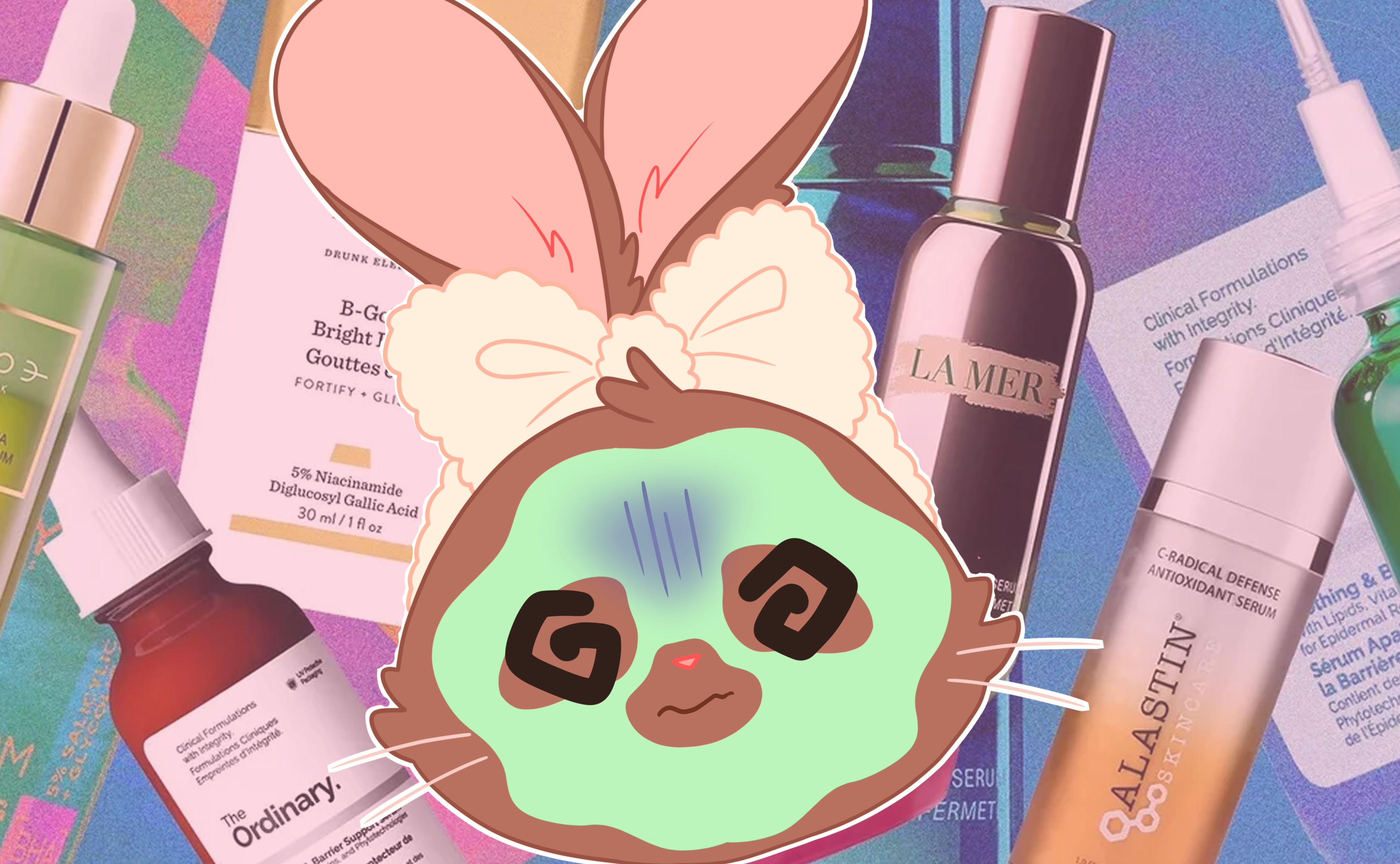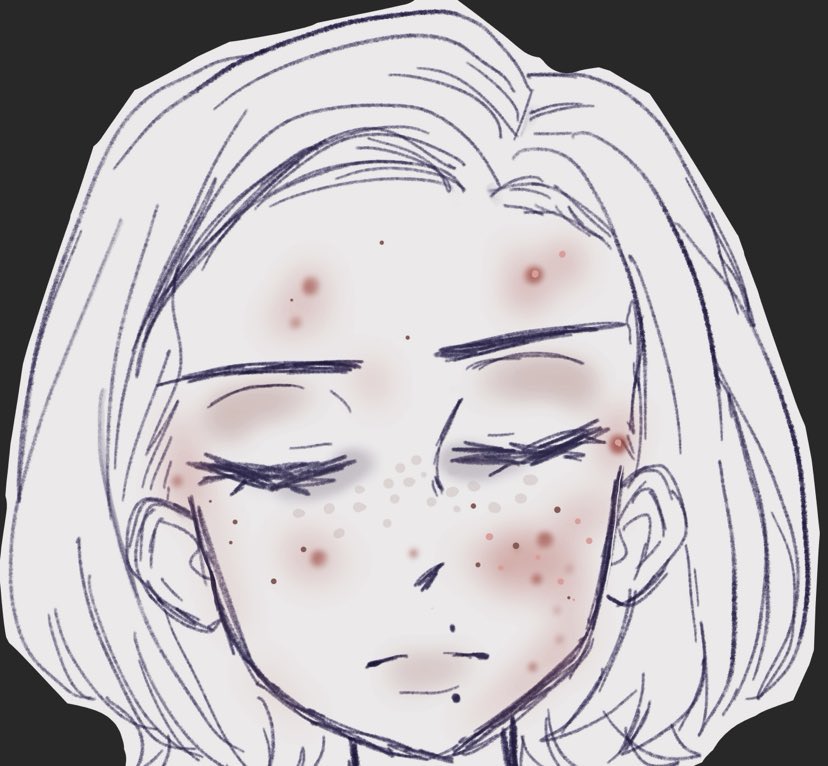So maybe you have some acne scarring? Do you wake up with skin that feels ‘dull’? Or maybe some dark sun or age spots? Maybe an uneven skin tone? While none of these concerns are ‘issues’ a lot of us want that glowing, clear complexion that we idolize on our screens. Some pigmentation and scarring can only be lightened or removed with rounds or more intensive treatments only offered in clinics, or by professionals, but in the mean time, here are a couple of ingredients to brighten your skin and help tackle that pigmentation!
Vitamin C
Vitamin C is a well known ingredient for brightening and evening out skintone, and it’s first in this list for that reason! Vitamin C is also relatively safe for most skin types as well, and its popularity in the skincare market means that it’s widely available at multiple different price points!
a 2017 study showed that vitamin c has been seen to inhibit melanin production in the skin, which can help to prevent dark spots from getting darker, and can even help prevent them from forming in some cases. It is also an anti inflammatory, which means it can help prevent that dull looking skin by decreasing oxidative stress of the skin (damage caused by external factors like our environment), or even reduce redness by strengthening the skins immune response and causing it to be less reactive.

Vitamin C is also high in antioxidants, again leading it to help prevent external damage on the skin, and it is also hydrating, all the listed benefits above helping it prevent Transepidermal water loss, which allows your skin to better retain moisture for longer; giving it that brightened and smooth ‘glow’
my current favourite vitamin C option, however there are many more affordable options out there too!
Propolis
if you are familiar with Asian beauty, you have probably heard of propolis! Propolis is a gluey, tacky substance produced by bees to help create and fix their hive from any cracks or damage, using a mix of beeswax and saliva. Yummy! It is a popular ingredient around the world and has been used even by ancient civilisations for its antibacterial, antiseptic, antifungal and anti-inflammatory benefits! sounds great, huh?

all of these things focus on healing and fortifying the skin against external and free radical damage, UV damage, and wound care, leading to overall improved health, brightness and an improved moisture barrier. Propolis can inhibit the growth of certain bacteria that can cause damage to the skin, meaning it can help pigmentation or uneven skin tone that is caused by irritation or an inflammatory response.
It is also great if you have acne prone skin like me, because it is anti fungal, moisturising and doesn’t clog pores!
my current propolis serum, many asian beauty stores provide multiple propolis options as it’s a very popular ingredient to get that ‘glowing’ skin
Tranexamic acid
maybe a lesser known ingredient but no less mighty as, just like Vitamin C, it helps prevent your skin from producing more melanin, blocking the pathways that lead to pigmentation getting darker or more noticeable. The way that these two powerhouses differ, is that tranexamic acid is a much more targeted way to treat pigmentation specifically; the red, purple or brown marks that may be left over after acne or skin irritation.
tranexamic acid comes from the amino acid lysine which, when applied topically on the skin, changes the way the skin produces melanin. It has also been shown to strengthen the skin barrier, increase skin hydration, and help treat conditions such as roscea (from a group study done in 2015)
However, this is a relatively new ingredient to the skincare market, and more research is being done into its benefits and how it works. In my experience, I’ve seen a significant reduction in my acne scarring and, when I use it on my active acne, it is less likely to scar

I chose an eye cream for my tranexamic acid application to help with dark circles, and I also use it as an acne spot treatment!
Sunscreen
what? sunscreen doesn’t lighten or brighten skin! Correct, dear reader! So why is sunscreen on this list? Well, not only is sunscreen the most important part of ANY AND EVERY skincare routine, but it also prevents UV rays! This is the harmful part of the sun, that leads to burning, advanced skin ageing, and skin cancer.
Melanin (that thing that makes all those dark spots and marks more visible) is a pigment in our skin that absorbs UV. That’s great, because it can help protect our skin from the sun, but the more UV melanin absorbs, the darker that pigment can get, and the more of it there is in the skin. That’s why vitamin C and tranexamic acid are working the block that production!

Well sunscreen does one better, and prevents that UV from getting to our skin in the first place! Acting as a barrier that scatters the UV and prevents it from penetrating the skin, meaning the melanin doesn’t absorb those rays, meaning the pigment isn’t stored in our skin, meaning that the dark spots don’t get darker and the pigmentation doesn’t get worse. So all the other ingredients in this list can actually be effective and do their jobs! Don’t negate all your hard work by forgetting sunscreen.
I cycle through a lot of different sunscreens in my routine, but this is my tried and true for affordability and ease of use – no eye sting, bad taste or strong smell, and doesn’t aggravate my acne!
Final Thoughts
There are a lot of other brightening ingredients out there as well, yuzu extract, cloudberry, azelaic acid, alpha arbutin, etc etc, but this would be a monster of a blog post if we tried to cover them all! And by no means do you need all of these in a routine, or even to use the exact products I showed here! These are what works for my and my skin, but your skin may be entirely different! That’s the beauty of it.
One thing you should never take from these posts, is that you NEED any of these things (except sunscreen, everyone needs sunscreen). If pigmentation, scarring, sun spots or dark marks aren’t something that bothers you then great! Wonderful! But if they are, then I hope this can be a helpful resource in where to start and how to help.
Remember, topical treatments can only help so much, so speak to a dermatologist if you are unsure of the best way to treat your skin concerns.
As always, moisturise, apply your sunscreen, and have a great day 🙂


The pigmentation I was left with after dealing with my acne, vs the skin I have today, choosing ingredients that actually target the concerns I have, and knowing how to use them. Not perfect, never perfect, perfection isn’t real, but at a place where I am happy with and can manage my skin how I want!
– The Masked Bunny



